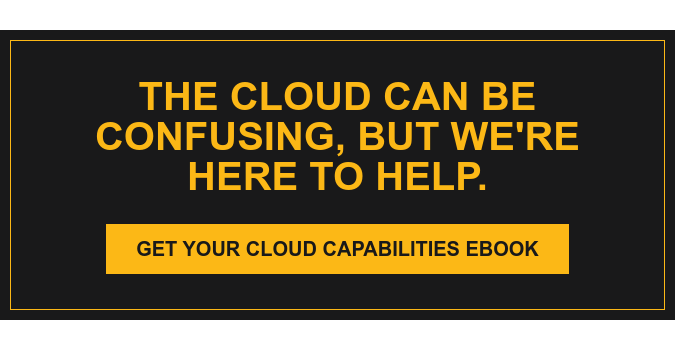 One of the biggest technology questions companies face today, from a financial and operational standpoint, is whether or not to migrate to the cloud. Shifting key operational functions to a cloud-based platform brings with it many benefits and challenges. There are financial advantages involved with less capital spending on IT infrastructure, but there may also be a certain period of time required to adjust to the change.
One of the biggest technology questions companies face today, from a financial and operational standpoint, is whether or not to migrate to the cloud. Shifting key operational functions to a cloud-based platform brings with it many benefits and challenges. There are financial advantages involved with less capital spending on IT infrastructure, but there may also be a certain period of time required to adjust to the change.
As your company contemplates taking advantage of the cloud, here are a few vital questions you should consider. These go beyond cloud computing basics and help you identify what cloud environment is right for your organization. You just might find that the answers to these questions will make this decision much simpler.
1. How Much Bandwidth Will You Need?
This is one of the trickiest questions for businesses. For one thing, few managers pushing for cloud migration have a full understanding of the amount of bandwidth currently being used across the company on a daily basis. Internet bandwidth can be consumed by many of an employee's daily activities; Internet browsing, video conferencing, phone calls, online training and virtual meetings to name a few. There are other, more systematic activities that may utilize your Internet connection as well; your company's website and server backups are two potential examples.
A successful cloud strategy requires an accurate estimate of the amount of bandwidth used by all functions of your company, not only those being transitioned to the cloud. Once you have that, ensure there is enough available bandwidth to support the applications you intend to move to the cloud. You may need a cloud services specialist to help you determine how a cloud environment will affect your bandwidth needs.
2. Who Will Use Your Cloud?
Another factor to consider is your number of users. How many users need access to the cloud? What will they be doing in your cloud? The quantity of users and types of activities they’ll be performing affect everything from bandwidth, to licensing, to helpdesk support. Make sure you have a clear understanding of how many people will need access to your cloud environment, along with what they will be doing.
3. What about Third-Party Apps?
What applications drive your company’s business? Will those applications work in the cloud? While more and more software vendors are providing hosted (Cloud) versions of their applications, most do not. All applications have specific prerequisites that define the environment the software should be installed in. In order for those applications to run well, the cloud platform they are installed on must meet those requirements.
Review the requirements provided by the developer of your application(s) and make sure the cloud platform is sufficient. This can be a complicated process. A cloud services provider can assist you in dealing with factors like locally connected devices (things like label printers, point of sale systems, laser cutters or metal fabricators), publishing your application via a shared desktop versus a VDI session (Virtual Desktop Infrastructure), accessibility via mobile devices (cell phones, tablets, etc.) and connectivity across multiple locations.
Cloud Migration Made Easy
The transition to a cloud computing environment can seem like a daunting task, but it doesn't have to be. If you have addressed the questions covered above and go further beyond cloud computing basics and see how Marco fits into your cloud options, download our free Cloud Capabilities eBook. It will give you the knowledge required to move forward with your cloud solution in a more efficient manner.
